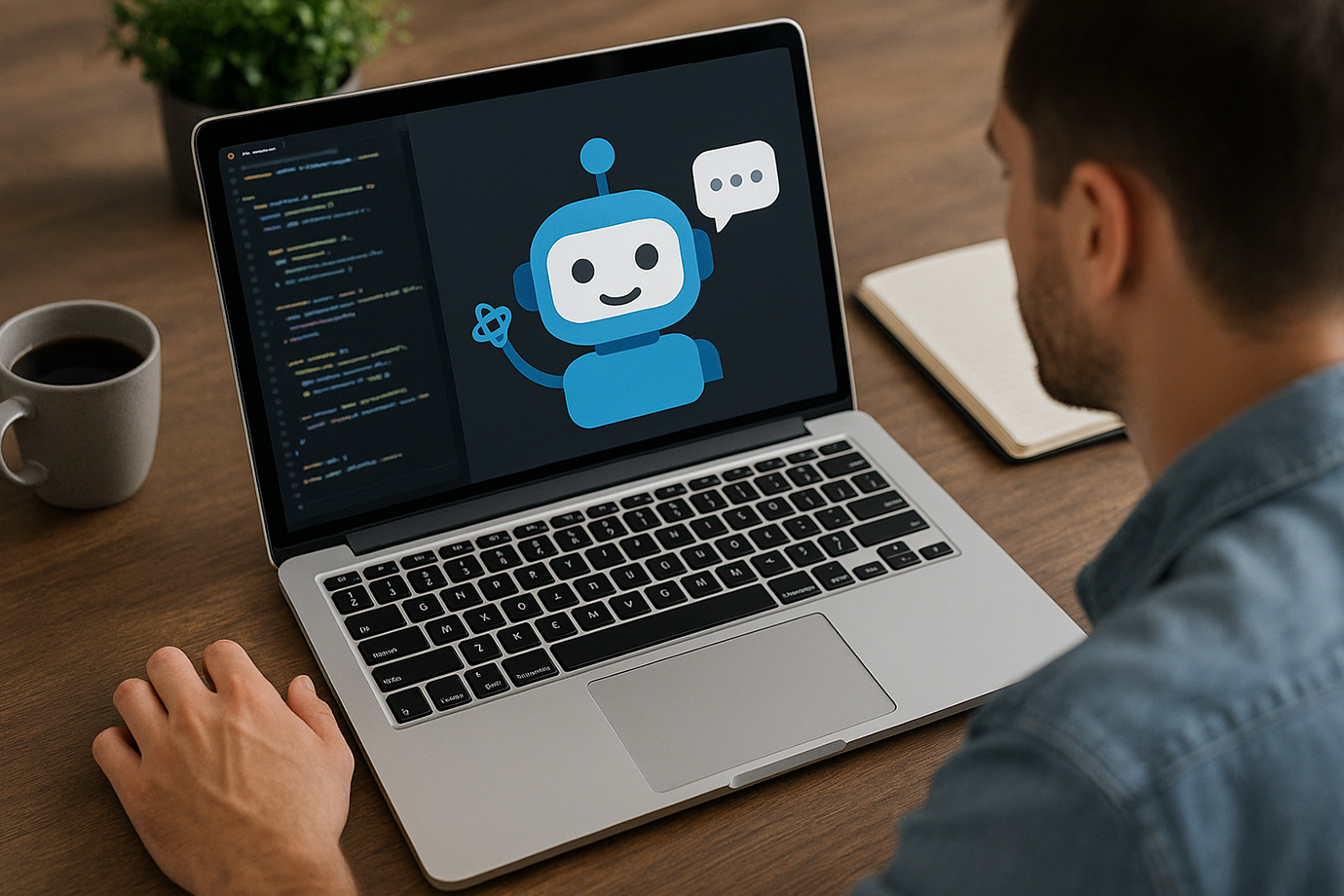How to Develop Smart Chatbots Using ReactJS for Improved Customer Interaction

08 Sep 2025
In today’s digital landscape, customers expect instant, personalized, and efficient support. Whether it’s answering product questions, assisting with checkout, or providing technical support, businesses need tools that can engage users 24/7. Enter smart chatbots, AI-driven conversational assistants that transform customer experiences.
One of the best technologies to build engaging chatbots is ReactJS, thanks to its speed, scalability, and flexibility. In this guide, we’ll explore how to develop smart chatbots using ReactJS, integrate them with AI, and deliver seamless customer interactions.
Why ReactJS Is Perfect for Chatbot Development
ReactJS is a favorite in front-end development, and it is well deserved. Its component-oriented design is best suited to develop chatbots that have dynamic interfaces and real-time interactions. Here’s why ReactJS stands out for chatbot development:
1. Component-Based Design
- Each part of the chatbot, chat window, message bubbles, and typing indicators, can be built as reusable React components.
- This makes development faster and maintenance easier.
2. Virtual DOM for Speed
- Chatbots require real-time updates, especially when users send and receive messages.
- React’s virtual DOM ensures smooth rendering without lag.
3. Easy AI Integration
- ReactJS works seamlessly with AI-powered APIs like Dialogflow, Botpress, or Rasa to make the chatbot “smart.”
4. Multilingual Support
- Create chatbots that can communicate in multiple languages, ideal for global businesses.
5. Scalable Architecture
- As your business grows, your chatbot can handle more conversations without performance issues.
Pro Tip: Use ReactJS, but a Node.js or Python-based backend to build a full-stack chatbot that supports complex customer requirements.
Key Benefits of Chatbots for Customer Interaction
Building a chatbot isn’t just about technology; it’s about enhancing customer engagement. Here’s what a smart, interactive chatbot can bring to your business:
- 24/7 Availability: Support customers anytime, anywhere.
- Instant Response: Eliminate the waiting time and increase satisfaction.
- Anticipatory Service: recommend product, discount, or service assistance before it is requested.
- Individualized Experiences: Artificial intelligence can be used to suggest products or solutions using customer behavior.
- Cost Savings: Eliminate the need to have large customer service departments.
Pro Tip: Increased Conversion Rates: Walk customers up the sales funnel.
Popular Frameworks & Libraries for ReactJS Chatbot Development
To speed up development, ReactJS integrates with several libraries and frameworks built specifically for chatbots:
| Library / Tool | Purpose | Use Case Example |
| React Chatbot Kit |
Pre-built UI components for chatbot design |
Quick MVP chatbot builds |
| BotUI |
Conversational UI framework |
Step-by-step interactive flows |
| React Simple Chatbot |
Easy to set up, lightweight |
Basic chatbots with simple logic |
| Dialogflow Integration |
AI-based natural language processing (NLP) |
Smart, AI-powered chatbots |
Step-by-Step Guide: Building a Smart Chatbot in ReactJS
Here’s a strategic roadmap to build engaging chatbots in ReactJS that truly improve customer interactions.
Step 1: Define Your Objectives
Before writing a single line of code, define what your chatbot will do.
- Is it for e-commerce, to recommend products and assist with checkout?
- Is it for healthcare, to keep appointments and reminders?
- Or in case of IT services, to do tech support and tickets?
Example Goal: 50 percent shorter customer support response time via chatbot automation of FAQs.
Step 2: Select the optimal AI Platform
AI integration is what makes your chatbot “smart.” Consider these popular options:
| AI Platform | Strengths |
| Dialogflow (Google) |
Natural language understanding, easy React integration |
| Microsoft Bot Framework |
Enterprise-grade chatbot features |
| Rasa |
Open-source and highly customizable |
| IBM Watson Assistant |
Advanced AI for complex workflows |
ReactJS can act as the front-end interface, while these AI platforms handle natural language processing and decision-making.
Step 3: Set Up Your ReactJS Environment
- Install Node.js and create a new React app:
npx create-react-app chatbot-app
- Add a chatbot library like React Chatbot Kit or React Simple Chatbot:
npm install react-chatbot-kit
Tip: Keep your project modular with separate folders for UI components, services, and AI integrations.
Step 4: Design a Conversational UI
User experience (UX) is critical for chatbots. A cluttered interface can frustrate users.
Key elements to include:
- Message bubbles with timestamps.
- Typing indicators to make the bot feel more human.
- Quick reply buttons for common actions.
- Dark and light themes for accessibility.
Step 5: Integrate AI for Smart Responses
Connect your chatbot to AI tools like Dialogflow or Rasa.
Example: Using Dialogflow, you can train the bot to understand customer questions like:
- “Where is my order?”
- “I need help resetting my password.”
- “Show me the latest discounts.”
Each intent in Dialogflow corresponds to a specific action or response in your ReactJS app.
Step 6: Test and Iterate
Testing is crucial before launch:
- Functional testing: Verify chatbot responses.
- Usability testing: Ensure a smooth user experience.
- Performance testing: Check for response speed and scalability.
Metrics to Track:
- Engagement rate
- Response accuracy
- Customer satisfaction (CSAT)
- Conversion and retention rates
Step 7: Launch and Monitor
Once your chatbot is live, monitor it regularly:
- Review conversations to find improvement areas.
- Update intents and responses to match customer behavior.
- Scale features as your business grows.
Industry-Specific Chatbot Use Cases
Different industries can leverage ReactJS chatbots in unique ways:
1. E-commerce
- Product recommendations based on browsing behavior.
- Assisting during checkout to reduce cart abandonment.
- Tracking orders and delivery updates.
2. Healthcare
- Scheduling and rescheduling appointments.
- Sending medication reminders.
- Answering common health-related queries.
3. IT & Tech Support
- Automating ticket creation and status updates.
- Handling repetitive technical questions.
- Offering self-service troubleshooting guides.
Best Practices for Chatbot UX in ReactJS
A chatbot’s effectiveness depends on user experience. Follow these best practices:
- Keep responses concise and natural. Avoid robotic language.
- Offer fallback options like “Talk to a human agent.”
- Customize customer-based conversations.
- Be accessible, such as being multilingual and screen reader.
- Deliver performance tracking analytics dashboards.
Performance Metrics for Chatbot Success
To measure the impact of your ReactJS chatbot:
- Engagement Rate: Percentage of users actively interacting with the bot.
- Response Accuracy: How often the bot gives correct answers.
- CSAT (Customer Satisfaction Score): Measure through post-chat surveys.
- Conversion Rate: Percentage of chatbot users completing desired actions (such as making a purchase).
- Retention Rate: Frequency of returning users.
Final Thoughts
Smart chatbots have become an essential element of modern customer engagement strategies. Considering the strength of ReactJS with the help of AI-based platforms, companies are able to develop interactive, responsive, and personal chatbots that can cater to the expectations of the current customer.
Whether retail, healthcare, or tech service, ReactJS is flexible and provides the tools you need to create chatbots that people love and results. Identify clear goals, select the appropriate AI integrations, and keep improving upon them in the form of performance metrics.
NanoByte Technologies assists companies in creating and implementing high-level chatbots that change the way businesses engage with their customers. Contact us today to discuss how we can help you build your next-generation conversational solution.
FAQ: Chatbots and ReactJS
Q1. What is the best way to build a chatbot in ReactJS?
Use a library like React Chatbot Kit or React Simple Chatbot for the front end, and integrate with AI tools such as Dialogflow for natural language processing.
Q2. Which libraries are most popular for chatbot development in ReactJS?
React Chatbot Kit, BotUI, and React Simple Chatbot are widely used for building conversational interfaces.
Q3. Can ReactJS chatbots integrate with AI platforms like Dialogflow?
Yes, ReactJS works seamlessly with AI services like Dialogflow, Rasa, and IBM Watson.
Q4. How do chatbots improve customer interaction in 2025?
They offer 24/7 availability, quicker response times, and tailored support, which boosts satisfaction and retention rates.

.jpg)


.jpeg)
